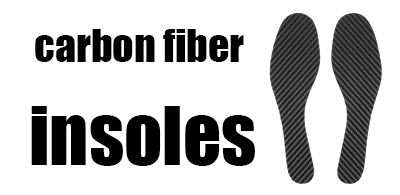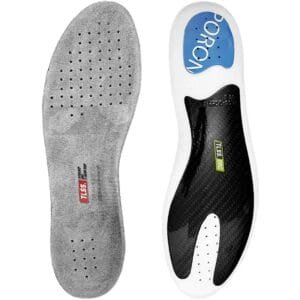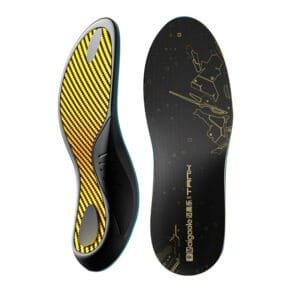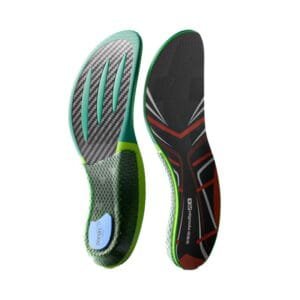Für Läufer zählt jeder Schritt. Das richtige Schuhwerk kann den Unterschied zwischen einer persönlichen Bestleistung und schmerzhafter Ermüdung ausmachen. Während die meisten sich auf Schuhe konzentrieren, Kohlefaser-Einlagen entwickeln sich zu einer Geheimwaffe für Spitzen- und Freizeitläufer gleichermaßen. Aber was macht sie so effektiv?
Dieser Artikel befasst sich mit den Biomechanik von Einlegesohlen aus Kohlefaserund prüft, wie sie verbessern die Laufeffizienz, verringern den Energieverlust und beugen häufigen Verletzungen vor wie Plantarfasziitis. Wir vergleichen sie mit herkömmlichen EVA-Schaumstoffeinlagen, prüfen wissenschaftliche Studien und beantworten wichtige Fragen wie "Sind Carbonfaser-Einlagen gut für Marathonläufer?"
Am Ende werden Sie verstehen, warum Laufsohlen aus Kohlefaser sind - und ob sie das Richtige für Sie sind.
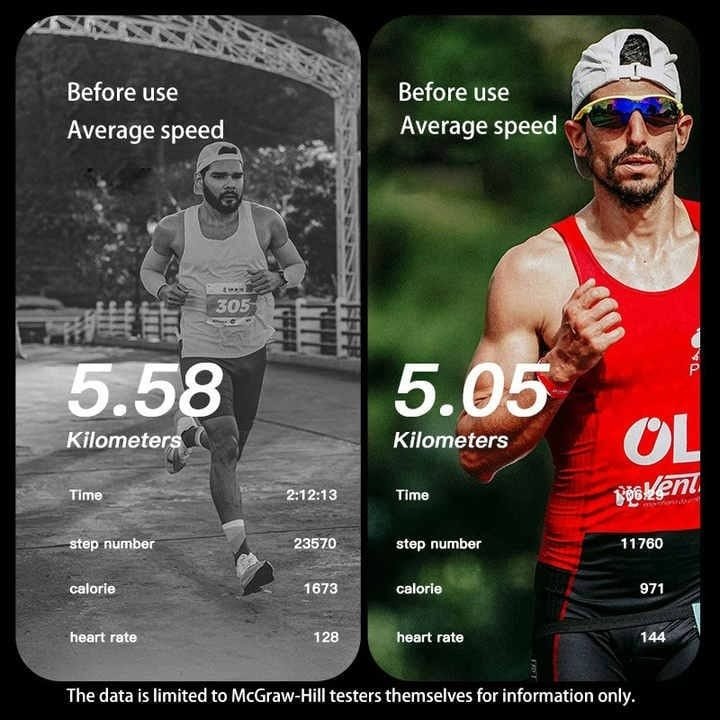
1. Die Wissenschaft der Carbonfaser-Einlegesohlen: Wie sie funktionieren
Kohlefaser ist ein leichtes, extrem starkes Material, das in der Luft- und Raumfahrt und im Hochleistungssport verwendet wird. Bei Einlegesohlen bietet es einzigartige Vorteile:
A. Energierückgabe und Betriebseffizienz
Im Gegensatz zu weichem EVA-Schaum, der sich zusammenzieht und Energie absorbiert, Carbonfaser-Einlegesohlen wirken wie eine FederSie speichern Energie und geben sie bei jedem Schritt wieder ab.
Eine Studie aus dem Jahr 2022 Zeitschrift für Sporttechnik und -technologie festgestellt, dass Kohlefaserplatten in Laufschuhen verbessern die Laufökonomie um 4%-Grundsätze gelten auch für Carbon-Einlagen.
Bericht der Läufer weniger Muskelermüdung über große Entfernungen aufgrund geringerer Energieverluste.
B. Geringere Auswirkungen auf die Gelenke
Die Steifigkeit der Kohlefaser verteilt den Druck gleichmäßigDie Belastung von Knien, Knöcheln und Hüften wird reduziert.
Forschung in Medizin und Wissenschaft in Sport und Bewegung (2021) zeigten, dass steifere Einlagen Verringerung der Aufprallkräfte um bis zu 15%und verringert das Verletzungsrisiko.
C. Stabilität und Fußausrichtung
Überpronation (übermäßiges Abrollen des Fußes nach innen) ist ein häufiges Problem bei Läufern.
Einlegesohlen aus Kohlefaser übermäßige Bewegungen einschränkenDadurch wird eine bessere Ausrichtung gefördert und die Belastung der Plantarfaszie verringert.
2. Kohlefaser vs. EVA-Einlagen: Was ist besser für Läufer?
| Merkmal | Carbon Einlegesohle | Traditionelle EVA-Einlegesohlen |
|---|---|---|
| Energierückgabe | Hoch (federartige Wirkung) | Niedrig (absorbiert Energie) |
| Dauerhaftigkeit | Extrem langlebig | Komprimiert sich mit der Zeit |
| Gewicht | Ultraleichtes Gewicht | Schwerer durch Schaumstoff |
| Unterstützung | Fest, stabilisiert den Fuß | Weich, weniger stützend |
| Am besten für | Geschwindigkeit, Effizienz, Verletzungsprävention | Dämpfung (kurze Läufe) |
Das Wichtigste zum Mitnehmen: Wenn Sie Prioritäten setzen Geschwindigkeit, Effizienz und Verletzungspräventionist Kohlefaser überlegen. EVA ist besser für Gelegenheitsläufer, die Dämpfung bevorzugen.
-
$159.00Ursprünglicher Preis war: $159.00$93.99Aktueller Preis ist: $93.99. -
$134.00Ursprünglicher Preis war: $134.00$89.99Aktueller Preis ist: $89.99.
3. Wie Carbonfaser-Einlagen helfen, Laufverletzungen zu verhindern
A. Linderung der Plantarfasziitis
Plantarfasziitis (Fersenschmerzen) wird durch eine wiederholte Belastung der Plantarfaszie verursacht.
Einlegesohlen aus Kohlefaser Mikrorisse reduzieren indem sie das Fußgewölbe fest stützen und eine Überdehnung verhindern.
A 2023 Journal of Foot & Ankle Research Studie ergab, dass steife Einlagen reduzierten die Belastung der Plantarfaszie um 18% im Vergleich zu weichen Einlegesohlen.
B. Schienbeinkantensyndrom und Stressfrakturen
Übermäßiger Aufprall führt zu Schienbeinschmerz und Stressfrakturen.
Kohlefaser ist Schockausbreitung minimiert die wiederholte Belastung der Knochen.
C. Unterstützung der Achillessehne
Die starre Struktur reduziert übermäßige Knöchelbeugung, Verringerung der Achillessehnenbelastung.
4. Sind Carbonfaser-Einlegesohlen gut für Marathonläufer?
Ja, und zwar aus diesem Grund:
✅ Verbesserte Laufökonomie - Weniger Energieverschwendung bedeutet bessere Ausdauer.
✅ Verspätete Müdigkeit - Die Muskeln bleiben über längere Strecken frischer.
✅ Verletzungsprävention - Entscheidend für das Training mit hoher Kilometerleistung.
5. FAQ: Carbonfaser-Einlegesohlen für Läufer
F: Sind Einlegesohlen aus Kohlefaser bequem?
A: Sie sind fest, nicht plüschig - aber auf Leistung optimiert, nicht auf Weichheit.
F: Kann ich Karbonfaser-Einlagen in allen Laufschuh?
A: Ja, sie sind so konzipiert, dass sie in die meisten Laufschuhe passen.
F: Wie lange halten Carbonfaser-Einlagen?
A: Weitaus länger als Schaumstoff - typischerweise 1-2 Jahre bei starker Beanspruchung.
F: Sind sie ihren Preis wert?
A: Wenn Sie regelmäßig laufen, ist die Leistungssteigerung und Verletzungsprävention die Kosten zu rechtfertigen.
Schlussfolgerung: Sollten Sie auf Carbonfaser-Einlegesohlen umsteigen?
Wenn Sie es mit dem Laufen ernst meinen - sei es für Schnelligkeit, Ausdauer oder zur Vorbeugung von Verletzungen - dannCarbonfaser-Einlegesohlen bieten wissenschaftlich belegte Vorteile. Sie verbessern die Energierückgabe, reduzieren die Gelenkbelastung und sorgen dafür, dass Sie länger laufen können.
Sind Sie bereit, Ihren Lauf zu verbessern? Kaufen Sie unsere Hochleistungs-Kohlefaser-Einlagen hier.
